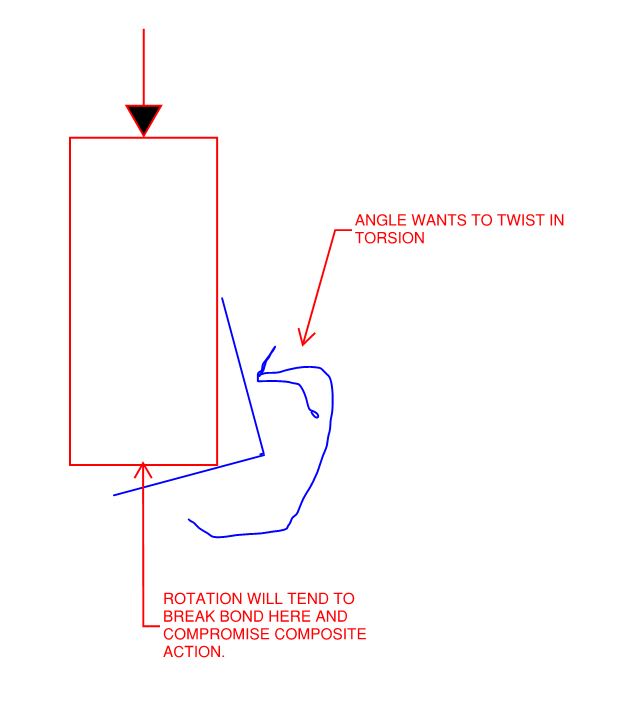LR11
Structural
- Sep 13, 2001
- 166
I have a single leaf brick wall over a garage opening, approximately 6m wide.
I want to support using a steel angle of size 150mm x 100mm (or 6" x 4").
I've heard about composite action but do not know how to convince myself it's achieved.
The angles are plain and galvanised (I have hard about ribbed angles which are known to offer composite action but these are not available in my area).
With the composite action, I'm guessing the strength requirements will easily be achieved. For deflection, I intend to prop at one or more locations until mortar is set, thereafter I'm guessing it will be more than OK. Torsional effects, will no longer be relevant.
Has anyone handled this in the past?
Have you come across any documentation or testing which will provide confidence with a plain un-modified length?
I want to support using a steel angle of size 150mm x 100mm (or 6" x 4").
I've heard about composite action but do not know how to convince myself it's achieved.
The angles are plain and galvanised (I have hard about ribbed angles which are known to offer composite action but these are not available in my area).
With the composite action, I'm guessing the strength requirements will easily be achieved. For deflection, I intend to prop at one or more locations until mortar is set, thereafter I'm guessing it will be more than OK. Torsional effects, will no longer be relevant.
Has anyone handled this in the past?
Have you come across any documentation or testing which will provide confidence with a plain un-modified length?

